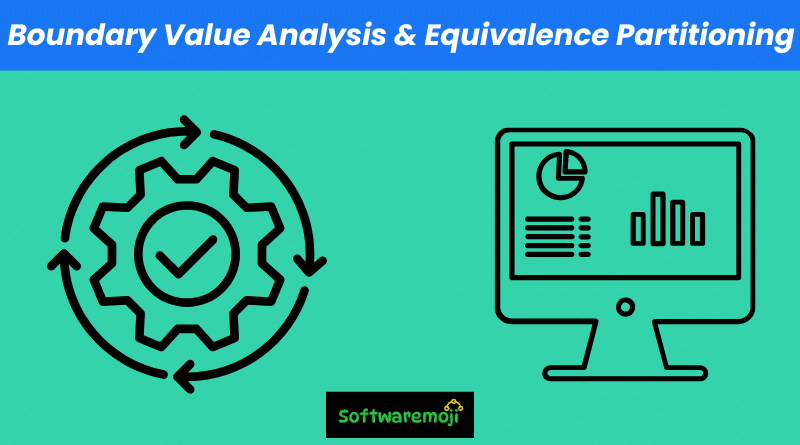
➡️Boundary Value Analysis:-
- Boundary Value Analysis in software testing focuses on testing values at the edge of input domains, where most defects tend to occur.
- Equivalence Partitioning divides input data into valid and invalid partitions to reduce the number of test cases while maintaining effective test coverage.
- BVA helps identify critical errors that commonly occur at the boundaries of input ranges, improving test efficiency.
➡️Introduction:
In software testing, designing effective test cases is crucial for ensuring quality while managing time and resources efficiently. Two popular black-box testing techniques—Equivalence Partitioning (EP) and Boundary Value Analysis (BVA)—help achieve this balance by reducing the number of test cases without sacrificing test coverage. These methods are particularly useful in scenarios with a large range of inputs or calculation-intensive logic.
This article will explore what these techniques are, why they are used, and how to apply them with real-world examples.
➡️What is Equivalence Partitioning?
Equivalence Partitioning (EP) is a black-box testing technique used to divide input data into valid and invalid partitions or “classes”. Each class represents a set of inputs that should be treated the same by the system. The assumption is that if one test case in a class works correctly, the rest will too.
Example:
Suppose a pizza ordering field only accepts values from 1 to 10:
- Valid Partition: 1–10
- Invalid Partition 1: < 1 (e.g., 0, -1)
- Invalid Partition 2: > 10 (e.g., 11, 20)
From these three classes, only one value from each is needed for effective testing, such as 5 (valid), 0 (invalid), and 11 (invalid).
➡️What is Boundary Value Analysis?
Boundary Value Analysis (BVA) is a complementary technique that focuses on testing the boundaries between valid and invalid equivalence partitions. This technique assumes that errors are more likely to occur at the edges of input ranges.
Common Boundary Test Points:
- Minimum value
- Just above the minimum
- Nominal value (a typical in-range value)
- Just below the maximum
- Maximum value
For the pizza example (valid range 1–10), the boundary test cases would be:
- 0 (invalid)
- 1 (valid)
- 2 (valid)
- 9 (valid)
- 10 (valid)
- 11 (invalid)
➡️Why Use These Testing Techniques?
Testing every possible input is impractical in most real-world applications. EP and BVA help in:
- Reducing the total number of test cases
- Covering maximum logical functionality with minimal effort
- Providing clear guidance on test design
- Increasing test efficiency and productivity
- Ensuring thorough testing even when time and budget are limited
These techniques are especially suitable for:
- Applications with form input fields
- Systems involving numerical range validations
- Calculation-intensive applications such as banking, billing, or inventory systems
➡️Practical Examples of EP & BVA:-
Example 1: Pizza Order Input Field:
Valid Range: 1–10
Message: “Only 10 pizzas can be ordered.”
Equivalence Partitioning:
- Valid Input Class: 1–10 → Test with 5
- Invalid Input Class 1: <1 → Test with 0
- Invalid Input Class 2: >10 → Test with 11
Boundary Value Analysis:
- Boundary Test Values: 0, 1, 2, 9, 10, 11
| Test Input | Expected Result |
|---|---|
| 0 | Not accepted (Invalid) |
| 1 | Accepted (Valid) |
| 2 | Accepted (Valid) |
| 9 | Accepted (Valid) |
| 10 | Accepted (Valid) |
| 11 | Not accepted (Invalid) |
Example 2: Password Field Length:
Password must be between 6 to 10 characters
Equivalence Partitions:
- Invalid: 0–5 characters → Test with 5
- Valid: 6–10 characters → Test with 8
- Invalid: >10 characters → Test with 11
Boundary Test Cases:
| Input Length | Expected Result |
|---|---|
| 5 | Not accepted (Invalid) |
| 6 | Accepted (Valid) |
| 10 | Accepted (Valid) |
| 11 | Not accepted (Invalid) |
➡️Key Benefits of EP and BVA:-
- ✅ Efficient Testing: Reduces the number of test cases while maintaining effectiveness
- ✅ Early Defect Detection: Focuses on likely error-prone input boundaries
- ✅ Applicable at All Levels: From unit to system testing
- ✅ Easy to Learn and Apply: Provides clear guidelines for testers
- ✅ Enhances Test Coverage: Helps cover all possible logical input conditions
Previous Post: Top Software Testing Techniques with Test Case Design Examples:-
➡️Conclusion:-
Boundary Value Analysis and Equivalence Partitioning are essential techniques in a tester’s toolkit. They help testers identify bugs in systems where exhaustive testing isn’t feasible due to resource limitations. These methods allow smart test case selection from a large input domain, ensuring maximum coverage with minimum effort.
By applying these techniques, software teams can improve their test strategies, achieve better product quality, and reduce the cost and time of testing.
